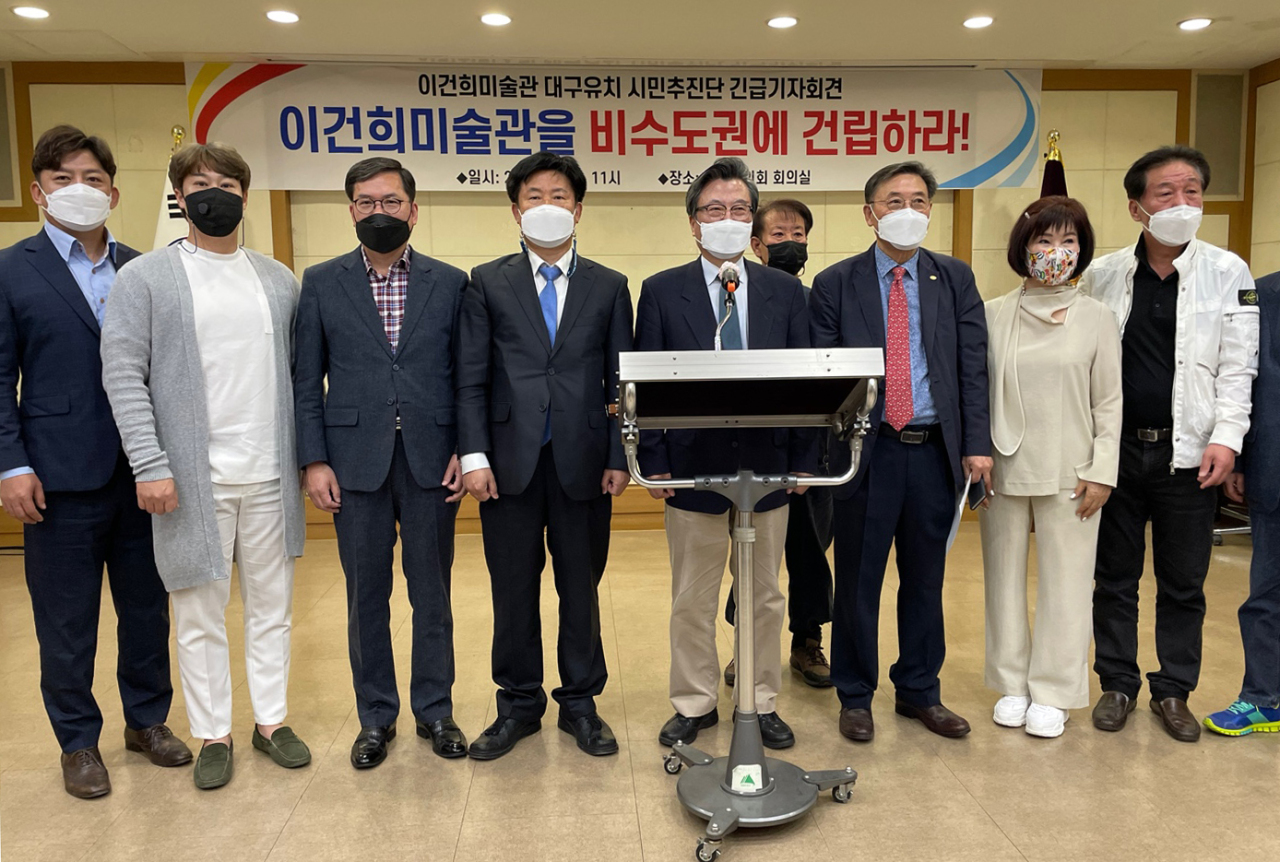As cities around the country battle over a proposed museum to house the late Samsung Group Chairman Lee Kun-hee’s art collection, the government said it would reveal details about the plan by mid-June.
“The minister is likely to hold a press briefing in Seoul in mid-June to share the progress made so far regarding a new museum or storage place,” an official from the Ministry of Culture, Sports and Tourism told The Korea Herald. “We have formed a task force committee and will wrap up the discussion by then.”
The competition among cities and legislators to host the museum in their regions escalated after Culture Minister Hwang Hee said in an interview with vernacular daily Munhwa Ilbo, published Monday, that the government was mulling the capital area as the site of the new museum.
“I fully understand the Bilbao effect but the competition seems too overheated right now,” Hwang said, referring to Guggenheim Museum Bilbao in Spain, which revitalized the once economically depressed city. “If it’s built in the capital area, it may be more accessible. Otherwise, it will end up wasting state funds,” Hwang said, hinting that building the museum outside of Seoul was unlikely.
Around 15 cities and districts are claiming the right to host a museum for Lee’s collection, most of which are outside of the capital area. The exceptions are Yongsan-gu in central Seoul and four cities in Gyeonggi Province, near Seoul. Major cities that have thrown in the gauntlet so far include Busan, Daegu and Sejong.
In Daegu, a committee representing the city’s cultural institutes issued a statement Wednesday criticizing the government for considering the capital area as the location. It denounced what it called the “government’s ruinous capital-centric tenet.”
Busan is also scrambling to persuade the central government. The country’s second-largest city will submit a proposal next week, suggesting that the site for the museum be selected through an open bid.
“The government said it will make an announcement in June, so we will submit the proposal ahead of that,” an official from the Busan city government told The Korea Herald.
Busan Mayor Park Heong-joon posted on Facebook on May 13 that the “country’s cultural power needs to expand across the country” when most cultural facilities are concentrated in Seoul.
“Of 2,800 cultural facilities, 36 percent of them are located in the capital area and a half of museums in Korea are located in Seoul,” he wrote.
“There has been a rumor in the art circle that the (culture) minister will report a plan to the president by June, which is why many of the interested parties like cities and legislators have been clamoring that the museum be built in their regions. It is almost like ‘Lee Kun-hee marketing’ for many cities,” a source who wished to remain anonymous said.
The vast majority of the works in Lee’s collection headed to two state-run museums. A total of 1,488 modern and contemporary masterpieces were given to MMCA while 21,600 antique works, including some 60 state-designated national treasures, went to the National Museum of Korea. The MMCA said earlier that its storage was at nearly 95 percent capacity after receiving the works from Lee’s collection.
In late April, President Moon Jae-in suggested coming up with ways to manage the collection after Culture Minister Hwang Hee said at a press briefing that more space to house the artworks should be secured since similar donations might follow. The briefing sparked speculation that a new museum would be established to manage the collection.
Meanwhile, the prospect of a new museum for Lee’s collection has fueled arguments in favor of a modern art museum in Seoul, a topic that has long been under discussion in the art world. A committee representing some hundreds of people in the art world advocating for a modern art museum will host a seminar on the issue in Seoul on Thursday, showing why they believe South Korea needs such a museum.
“We are considering the Songhyeon-dong area for the modern art museum because the place is particularly meaningful. The place was used as US Embassy personnel housing before it was bought by Samsung Life Insurance, when Samsung Group planned to build a museum,” said Chung Joon-mo, a former chief curator at MMCA who is on the committee calling for a modern art museum. The plot of land being proposed as the new museum site is currently owned by Seoul City.
“The place is perfect to form a cultural cluster as there are many cultural institutes near the place,” Chung said. “Another option is to use the Government Complex Seoul building in Jongno-gu, central Seoul, which is technically empty after government ministries moved to Sejong City.”
By Park Yuna (
yunapark@heraldcorp.com)







![[Today’s K-pop] Blackpink’s Jennie, Lisa invited to Coachella as solo acts](http://res.heraldm.com/phpwas/restmb_idxmake.php?idx=644&simg=/content/image/2024/11/21/20241121050099_0.jpg)
